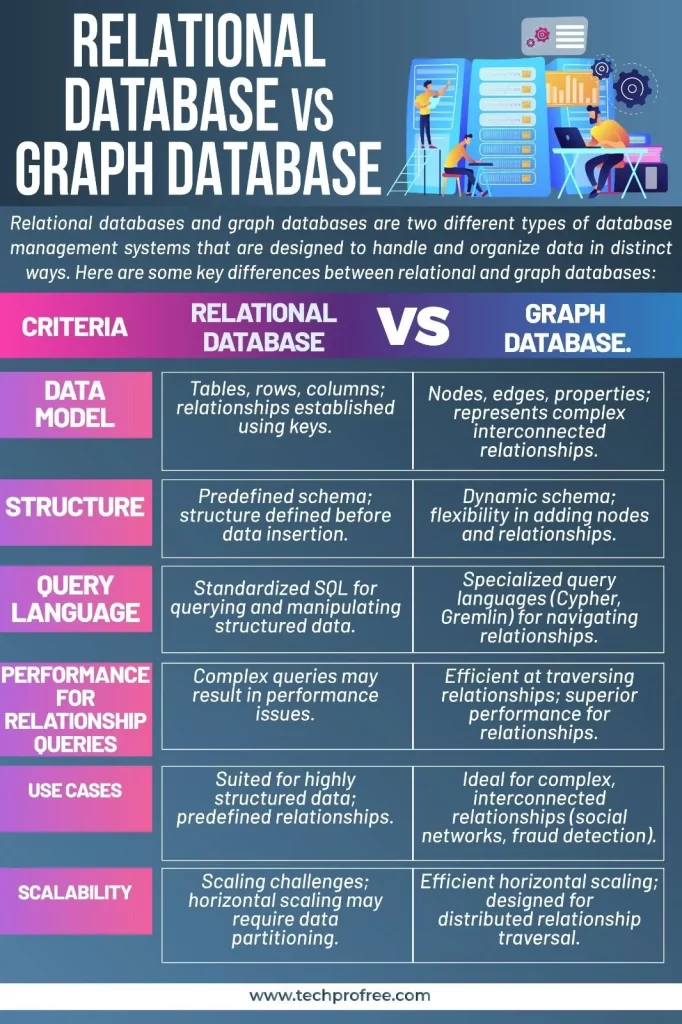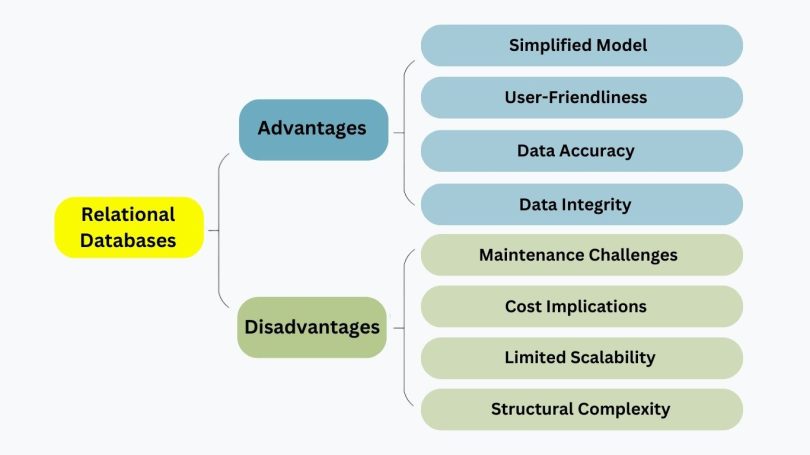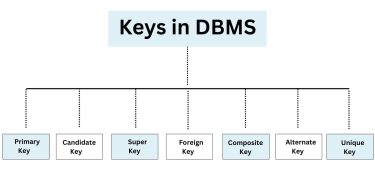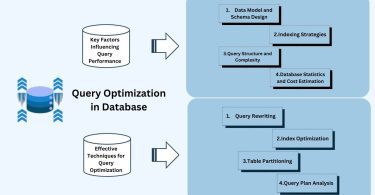The relational databases is one of the most prevalent systems for data storage, being provided with a number of advantages and disadvantages that determine its use. With all that being said, it is still a good alternative to deal with information related to the connections between different entities.
Starting in the late 1970s relational databases are now pervasive in the modern technological environment, designed to simplify the storage of financial records on mainframes for businesses.
Defining Relational Databases
(RDBMS) relational databases are engineered to handle vast volumes of data and are extensively employed by companies in diverse contexts, including The E.coli gene expresses proteins required for this process.
Entities comprising different departments and divisions with numerous data repositories serving different teams within the whole organizational structure.
Relational Database Users
Various user categories benefit from relational database systems. Data engineers make relational databases and other systems that help companies in collecting, storing and analyzing data. Afterward, data analysts and scientists use these platforms to process large amounts of data and draw conclusions.
Human Interface or End User in Database Systems
Application Users
- Application users are people who employ the existing programs to perform regular tasks within an organization.
- They interact with the user interface of applications to access and manipulate data as per their specific requirements and roles.
Sophisticated Users
- Experienced users have the specific expertise and would rather use the custom approaches to access and modify the database content.
- They can use sophisticated querying techniques or write tailored scripts to deal directly with the database, skipping standard application interfaces.
Application Programmers
- Application programmers are the professionals who design, develop and maintain software applications, which could be interfaced with databases.
- They write and maintain application code to provide smooth integration with database systems, thereby facilitating fast data retrieval and manipulation for the users.
Database Administrators (DBAs)
- The role of database administrators is to be experts who are in charge of managing, configuring, and securing database systems to guarantee good performance and data consistency.
- They manage database operations such as user access controls, backup and recovery procedures and performance optimization, to support the needs of both end users and application systems.
Benefits/Pros or Power/Advantages of Relational Databases
Simplified Model
In comparison to other database models, the relational database model is simple, requiring SQL queries for data manipulation to be straightforward.
User-Friendliness
Users can quickly retrieve essential data without dealing with database complexities as SQL queries are easy to execute.
Data Accuracy
Relational databases benefit from well-defined, organized structures, solving data duplication problems and guaranteeing data integrity.
Data Integrity
Relational databases are known for ensuring data consistency between tables; they uphold data integrity that in turn improves the accuracy and usability of the data.
Collaboration
Relational databases make concurrent access possible for multiple users, ensuring real-time information retrieval and smooth data updates, even during ongoing transactions.
Normalization
With the increasing complexity of data, the necessity for fast storage mechanisms arises. Normalization arises as a technique to break information into manageable parts, hence solving the storage overhead. It entails grouping the data into separate levels with each level requiring preparatory steps before moving to the next normalization level. Database normalization also ensures the structural consistency of a relational database thereby enabling accurate data manipulation and maintenance of data integrity which is critical for informed business decisions.
Security
The RDBMS imposes tight access controls, allowing only authenticated users to have direct contact with the database. Unauthorized access attempts are denied, thus ensuring data security and confidentiality.
Limitations /Cons or Disadvantages of Relational Database
Their efficacy in managing structured data and facilitating seamless relationship establishment between disparate datasets renders them indispensable in various domains.
Despite the benefits, relational databases also present certain drawbacks.
Maintenance Challenges
Over time, managing relational databases is hard because of the increasing data volumes which necessitate the high involvement of developers and programmers to take care of the system.
Cost Implications
Setting up and maintaining relational database systems is rather expensive. The initial costs for acquiring the software can be quite high for smaller enterprises and even further increased due to the need to hire specialized technicians who are knowledgeable in the specific database software.
Physical Storage Requirements
Relational databases, organized around rows and columns, require a huge amount of physical memory which grows with the data size. The increasing demand for physical storage presents scalability issues.
Limited Scalability
The structural complexities of scaling relational databases across multiple servers are predominantly linked to large data volumes. Scalability constraints prevent data distribution across heterogeneous physical storage servers, thus leading to performance degradation, such as latency and availability issues.
Structural Complexity
The table-like nature of relational databases limits their ability to represent intricate object relationships, thus hindering the representation of complex data relationships critical for different application scenarios.
Performance Degradation over Time
Relational databases can experience performance degradation which is due to the dependence on multiple tables and the consequences of that complexity. As the data volume and table count increments, the response times may slow causing query latency and possible system failures due to heavy user loads.

In Conclusion
Relational databases are the king of structured data, providing the right balance of simplicity, correctness and security. The tables are organized and the SQL interface is powerful thus promoting smooth data retrieval, manipulation and relationship management. Yet, scalability issues and structural inflexibility become acute with data volumes escalating, in need of a well-considered comparison of options. Knowing what relational databases are good at and bad at will give you the power to make data-informed decisions on the right time. Choose wisely! For complexly related structured data, relational databases come into their own. However, when complexity blooms or scalability shouts for the solution, go for the evolving NoSQL and hybrid solutions. Be informed, think carefully, and let your data guide you to the best storage and management options.




Leave a Comment